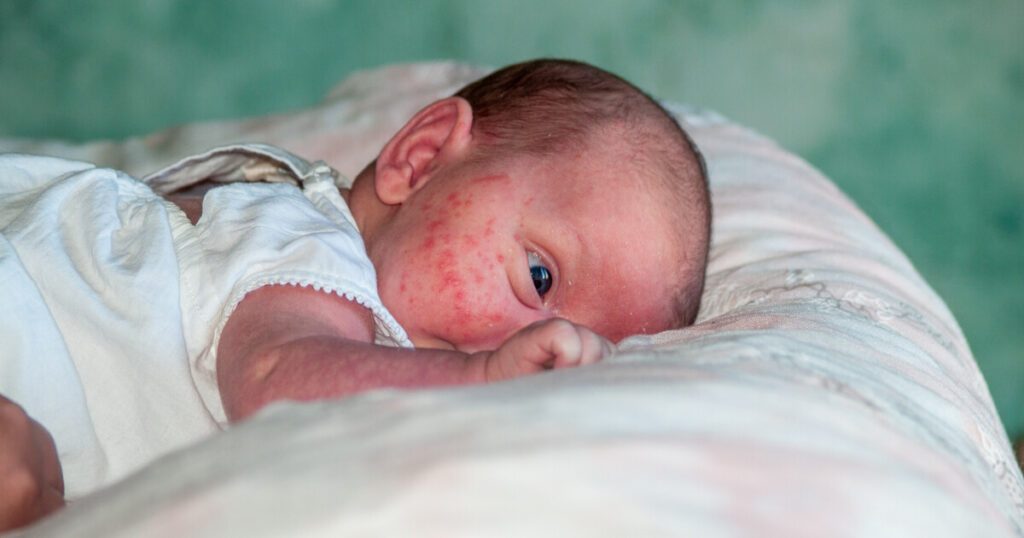Key Takeaways
- Rubella is a contagious viral infection known for its red rash and mild symptoms.
- It poses serious risks during pregnancy, including birth defects.
- Vaccination is the most effective way to prevent rubella and protect communities.
Rubella, also called German measles, may sound like a mild childhood illness, but its impact can be far more serious—especially during pregnancy. Rubella is a contagious viral infection that causes a distinctive red rash, mild fever, and swollen glands, and it can lead to severe birth defects if contracted during pregnancy. Understanding what it is, how it spreads, and how to prevent it helps you protect yourself and others.
You might not notice symptoms right away. The rash often starts on your face and moves down your body, sometimes with a sore throat or joint pain. Because rubella can spread before symptoms appear, it’s easy for someone to pass it on without realizing. That’s why vaccination remains the best defense against infection.
Learning about rubella isn’t just about staying healthy—it’s about preventing harm to future generations. Knowing the signs, risks, and protection steps gives you the power to act early and stay safe.
Contents
1. What Is Rubella (German Measles)?
2. Symptoms and Rash of Rubella
- Typical Rash Appearance and Progression
- Fever and Other Early Signs
- Swollen Lymph Glands and Joint Pain
- Symptom Differences in Adults and Children
3. Transmission, Incubation, and Diagnosis
- How Rubella Spreads
- Incubation Period and Infectious Window
- Diagnostic Methods and Laboratory Testing
4. Risks and Complications of Rubella
What Is Rubella (German Measles)?
Rubella, also called German measles or three-day measles, is a contagious viral infection caused by the rubella virus. You can catch it through droplets from coughs or sneezes, but vaccination has made it rare in many countries. The illness is usually mild, yet it can cause serious harm to unborn babies if contracted during pregnancy.
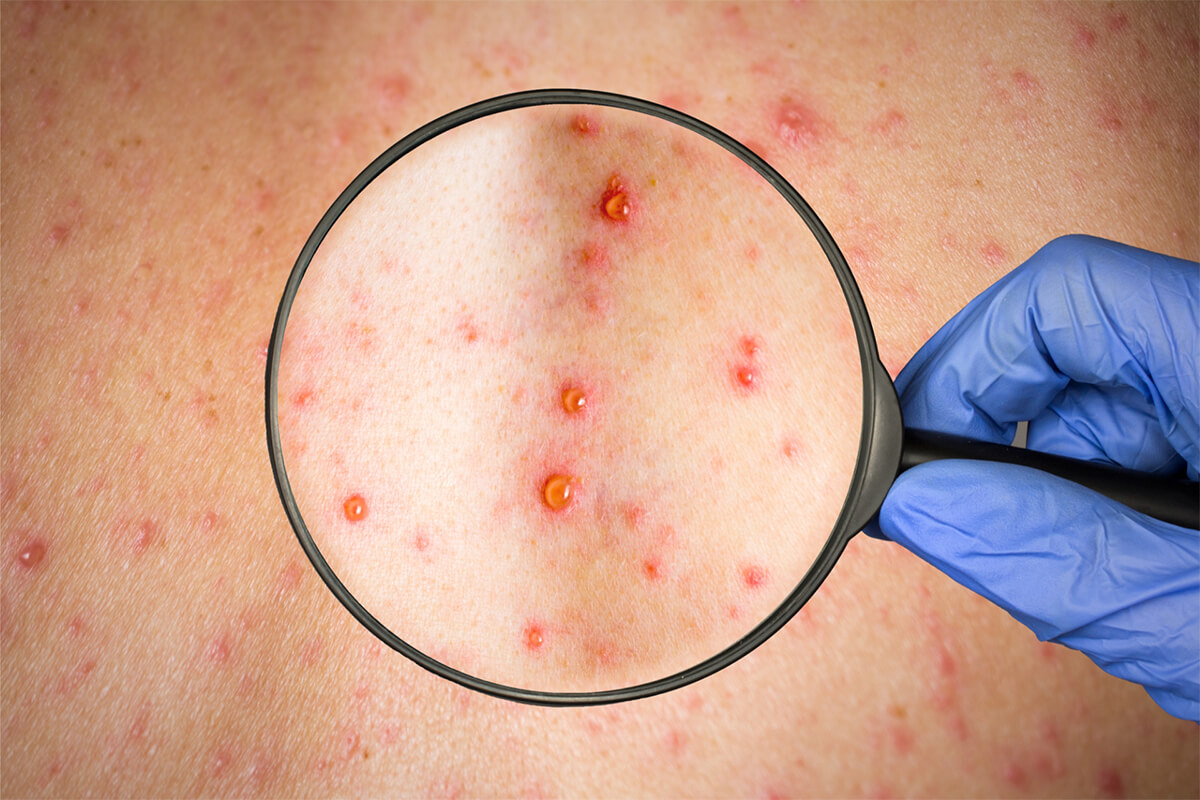
Overview of Rubella Virus
The rubella virus belongs to the Rubivirus genus in the Matonaviridae family. It contains a single-stranded RNA genome and spreads mainly through respiratory droplets. Once inside your body, the virus multiplies in the throat and lymph nodes before entering the bloodstream.
You might not notice symptoms right away. The incubation period usually lasts 14 to 21 days. When symptoms do appear, they often include a pink or red rash, mild fever, swollen lymph nodes, and joint pain.
Rubella’s rash typically starts on your face and spreads to your body within hours. It usually fades after about three days, which is why it’s sometimes called three-day measles. Most people recover fully, but infection during pregnancy can lead to congenital rubella syndrome (CRS), which can cause birth defects.
History and Nomenclature
Rubella was first described as a distinct illness in the early 19th century. Before that, people confused it with measles (rubeola) and scarlet fever. The term “German measles” originated from German physicians who recognized it as a separate disease in the 1800s.
The virus itself was isolated in 1962, confirming rubella as a unique viral infection. The name rubella comes from Latin, meaning “little red,” referring to the color of its rash.
After the MMR vaccine (measles, mumps, rubella) became widely used in the 1970s, rubella cases dropped dramatically in many regions. However, outbreaks can still occur in areas with low vaccination coverage.
How Rubella Differs from Measles
Although rubella and measles share similar symptoms, they come from different viruses. Measles is caused by the rubeola virus, while rubella comes from the rubella virus (Rubivirus). Both spread through respiratory droplets, but rubella is generally milder and shorter in duration.
| Rubella (German Measles) | |
|---|---|
| Virus Type | Rubella virus (Rubivirus) |
| Rash Duration | About 3 days |
| Severity | Usually mild |
| Complications | Risk to unborn babies |
| Measles (Rubeola) | |
|---|---|
| Virus Type | Measles virus (Morbillivirus) |
| Rash Duration | 5–7 days |
| Severity | Often severe |
| Complications | Pneumonia, encephalitis |
You can usually tell them apart by the shorter illness and less intense rash of rubella. However, laboratory testing is the only reliable way to confirm which virus caused the infection.
Symptoms and Rash of Rubella
Rubella infection often causes a mild illness marked by a fine rash, low fever, and swollen lymph glands. You may also experience joint pain or temporary arthritis, especially if you’re an adult. Recognizing these signs early helps prevent spreading the virus and protects pregnant individuals from serious risks.
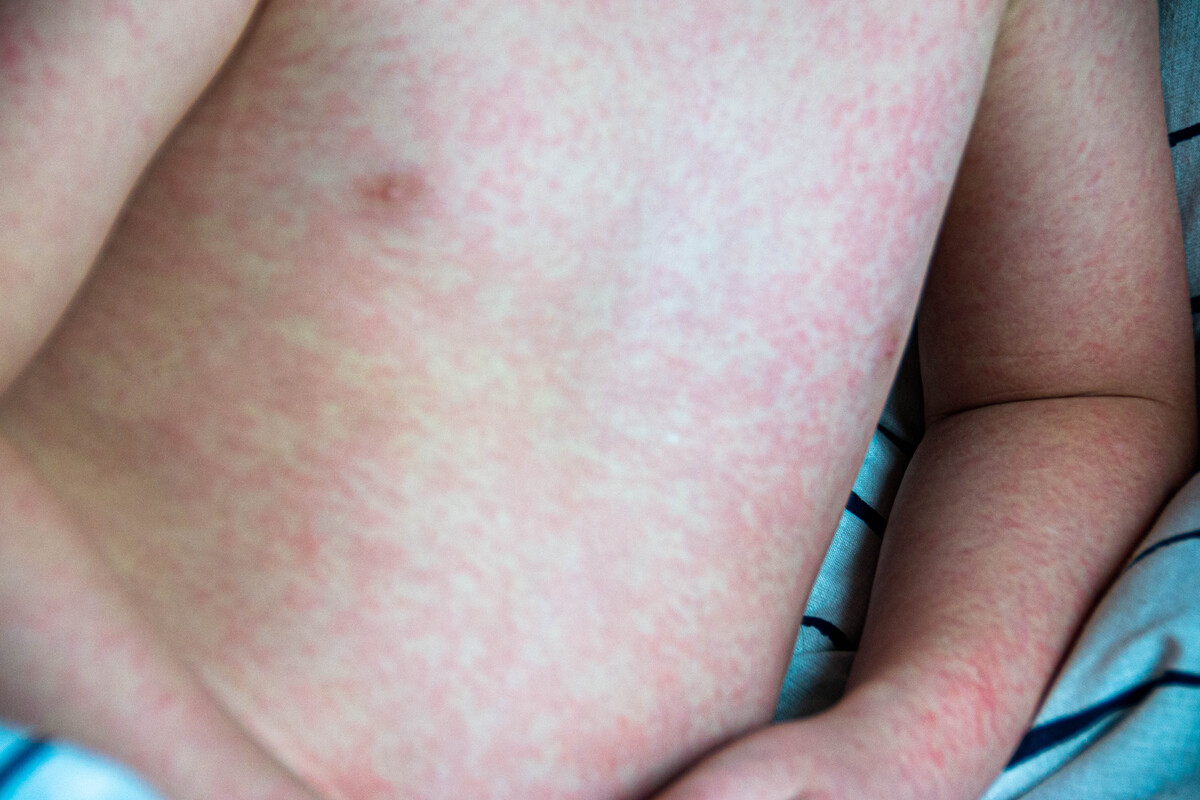
Typical Rash Appearance and Progression
The rubella rash usually appears two to three weeks after exposure. It often starts on your face or neck before spreading downward to your trunk, arms, and legs within 24 hours. The rash consists of small, pink or light-red spots that may merge into larger patches.
Unlike measles, rubella’s rash is not intensely itchy or scaly, and it typically fades after one to three days. The skin usually returns to normal without peeling or discoloration.
You may notice that the rash appears first behind the ears or along the hairline, which can help distinguish it from other viral rashes. During this time, you are most contagious from one week before to five days after the rash appears.
Fever and Other Early Signs
Before the rash develops, you may feel mildly unwell. A low-grade fever—usually less than 39°C (102°F)—often occurs first. You might also experience fatigue, headache, sore throat, or mild conjunctivitis (red eyes).
These early signs can resemble a common cold, which makes rubella easy to overlook. Some people also report runny nose or a general sense of discomfort lasting one or two days before the rash appears.
Because the symptoms are mild, you might not realize you’re contagious. The virus spreads through respiratory droplets when you talk, cough, or sneeze. Even if you feel fine, you can still transmit rubella to others during this period.
Swollen Lymph Glands and Joint Pain
One of the most distinctive features of rubella is swollen lymph glands, especially behind your ears, at the back of your neck, and along the base of your skull. These glands may feel tender or firm to the touch and often swell a few days before the rash appears.
You may also experience joint pain or temporary arthritis, particularly in your fingers, wrists, and knees. This is more common in adults than in children. The discomfort can last from three to ten days, though it usually resolves without lasting effects.
Applying gentle heat, resting, and staying hydrated can ease joint stiffness. Over-the-counter pain relief may help if your doctor approves.
Symptom Differences in Adults and Children
Rubella tends to be mild or even unnoticed in children, who often recover within a few days. Their main symptoms are the rash, slight fever, and swollen glands. Complications are rare in this age group.
Adults, especially women, may experience more pronounced symptoms such as joint pain, arthritis, or longer-lasting fatigue. Eye redness and sore throat can also be more noticeable.
While the illness itself is usually mild, rubella infection during pregnancy can cause serious harm to the unborn baby. This is why vaccination and early detection are essential for protecting both you and others from complications.
Transmission, Incubation, and Diagnosis
Rubella infection spreads mainly through respiratory droplets and can pass silently before symptoms appear. Understanding how the virus moves between people, how long it incubates, and how it is diagnosed helps you protect yourself and others from preventable complications.
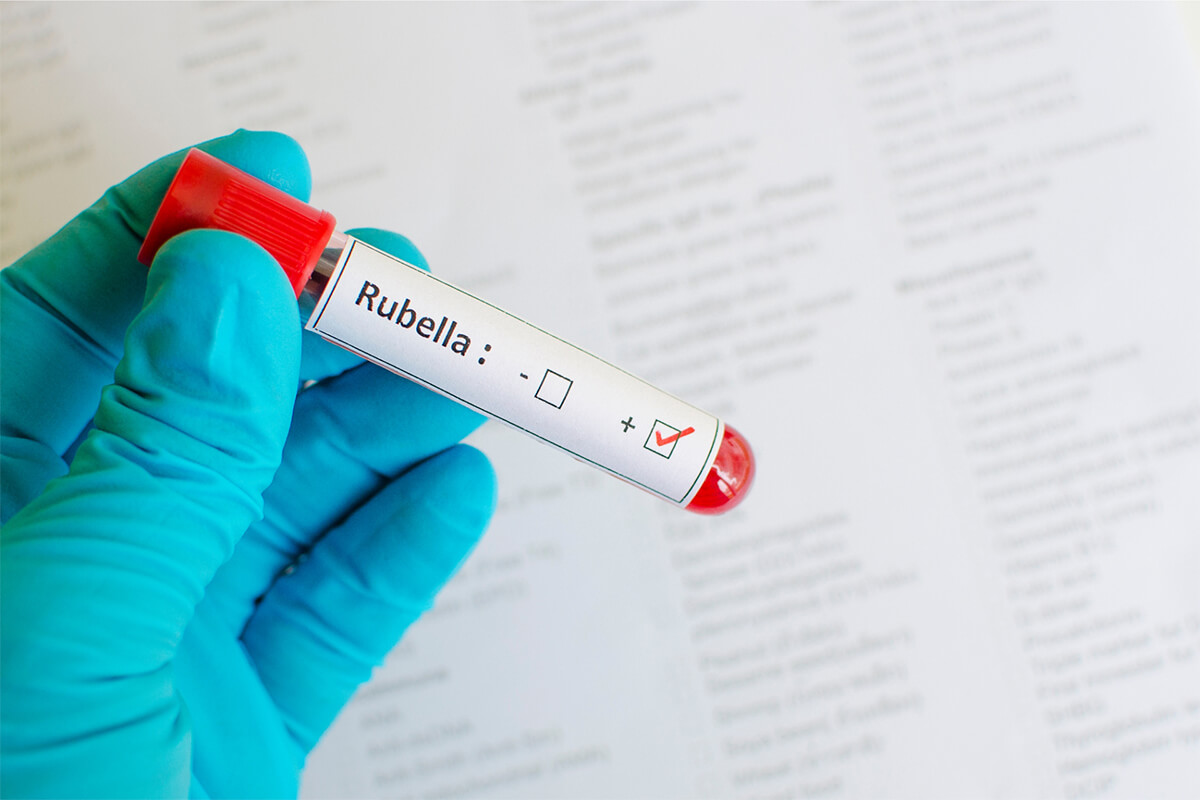
How Rubella Spreads
You can catch rubella when you breathe in droplets from an infected person’s cough or sneeze. The rubella virus (RuV) lives in the nose and throat and enters through the respiratory tract. Humans are the only known hosts.
The virus can also spread through direct contact with nasal or throat secretions. In close settings—such as schools or workplaces—rubella can move quickly among unvaccinated individuals.
Pregnant women face particular concern because rubella belongs to the group of TORCH infections—pathogens that can cross the placenta and harm the fetus. Transmission from mother to baby can occur during the first trimester, sometimes leading to congenital rubella syndrome (CRS), which causes serious birth defects.
Maintaining high vaccination coverage and isolating suspected cases remain the most effective ways to stop transmission.
Incubation Period and Infectious Window
After exposure, rubella’s incubation period averages about 17 days, with a range of 12–23 days. You may not notice symptoms during this time, but the virus is already multiplying in your body.
You become most contagious when the rash begins to appear, yet you can spread the virus from 7 days before to 7 days after the rash develops. This makes early detection and isolation essential.
Children and adults with mild or unrecognized illness can unknowingly transmit rubella, which complicates control efforts. Because up to half of infections are subclinical, public health measures rely heavily on vaccination and laboratory confirmation rather than visible symptoms alone.
Diagnostic Methods and Laboratory Testing
Clinical diagnosis of rubella is unreliable because its rash resembles other viral illnesses. Laboratory testing provides confirmation and helps track outbreaks.
Healthcare providers usually collect nasopharyngeal or throat swabs, urine samples, and blood specimens. Tests include:
| Test Type: RT-PCR | |
|---|---|
| Purpose | Detects rubella RNA for early diagnosis |
| Typical Sample | Throat or nasal swab |
| Test Type: IgM antibody test | |
|---|---|
| Purpose | Confirms recent infection |
| Typical Sample | Blood |
| Test Type: IgG antibody test | |
|---|---|
| Purpose | Checks immunity or past infection |
| Typical Sample | Blood |
If you’re pregnant, your provider may order TORCH screening to identify rubella and other congenital infection risks. Prompt reporting of confirmed cases helps prevent further spread and protect vulnerable populations.
Risks and Complications of Rubella
Rubella infection usually causes mild illness, but it can lead to lasting health problems in some people. Adults, especially women, may experience joint pain or inflammation, and infection during pregnancy can cause serious harm to the unborn baby. Rarely, rubella can affect the brain or other organs.

Complications in Adults
Adults often recover fully, but some develop arthritis or joint pain, particularly women. These symptoms usually appear within a week of the rash and may last days or weeks. Knees, wrists, and fingers are most often affected.
You may also experience temporary swelling of lymph nodes, mild conjunctivitis, or low-grade fever. Fatigue can persist after other symptoms fade.
In rare cases, rubella can cause encephalitis (inflammation of the brain). Symptoms such as headache, confusion, or seizures require immediate medical care. Though uncommon, encephalitis can lead to long-term neurological issues.
| Complication: Joint pain/arthritis | |
|---|---|
| Frequency | Common in women |
| Typical Duration | Days to weeks |
| Complication: Lymph node swelling | |
|---|---|
| Frequency | Common |
| Typical Duration | 1–2 weeks |
| Complication: Encephalitis | |
|---|---|
| Frequency | Rare |
| Typical Duration | Variable |
Rare Severe Outcomes
Severe complications are uncommon but possible. Encephalitis occurs in about 1 in 6,000 rubella cases and can cause brain swelling, seizures, or permanent neurological damage.
Another rare complication, thrombocytopenic purpura, leads to low platelet counts, easy bruising, and prolonged bleeding. It usually resolves but may require medical attention.
Peripheral neuritis, or nerve inflammation, can cause temporary numbness or weakness. While most people recover fully, these conditions highlight that rubella is not always a harmless illness.
People with weakened immune systems face higher risks of prolonged infection or more severe symptoms because their bodies clear the virus more slowly.
Risks During Pregnancy
If you are pregnant and contract rubella, the virus can cross the placenta and infect your baby. This can result in miscarriage, stillbirth, or congenital rubella syndrome (CRS)—a group of birth defects affecting the heart, eyes, ears, and brain.
CRS is part of the group of TORCH infections (Toxoplasmosis, Other, Rubella, Cytomegalovirus, Herpes simplex) known for causing congenital disorders.
The risk of severe outcomes is highest during the first trimester, when fetal organs are forming. Infection later in pregnancy carries lower but still significant risks.
Vaccination before pregnancy provides strong protection for both you and your baby.
Congenital Rubella Syndrome and Pregnancy Risks
Rubella infection during pregnancy can cause severe harm to the developing baby. Early infection, especially in the first trimester, increases the risk of miscarriage, stillbirth, or lifelong disabilities in the child. Vaccination before pregnancy remains the most effective way to prevent these outcomes.
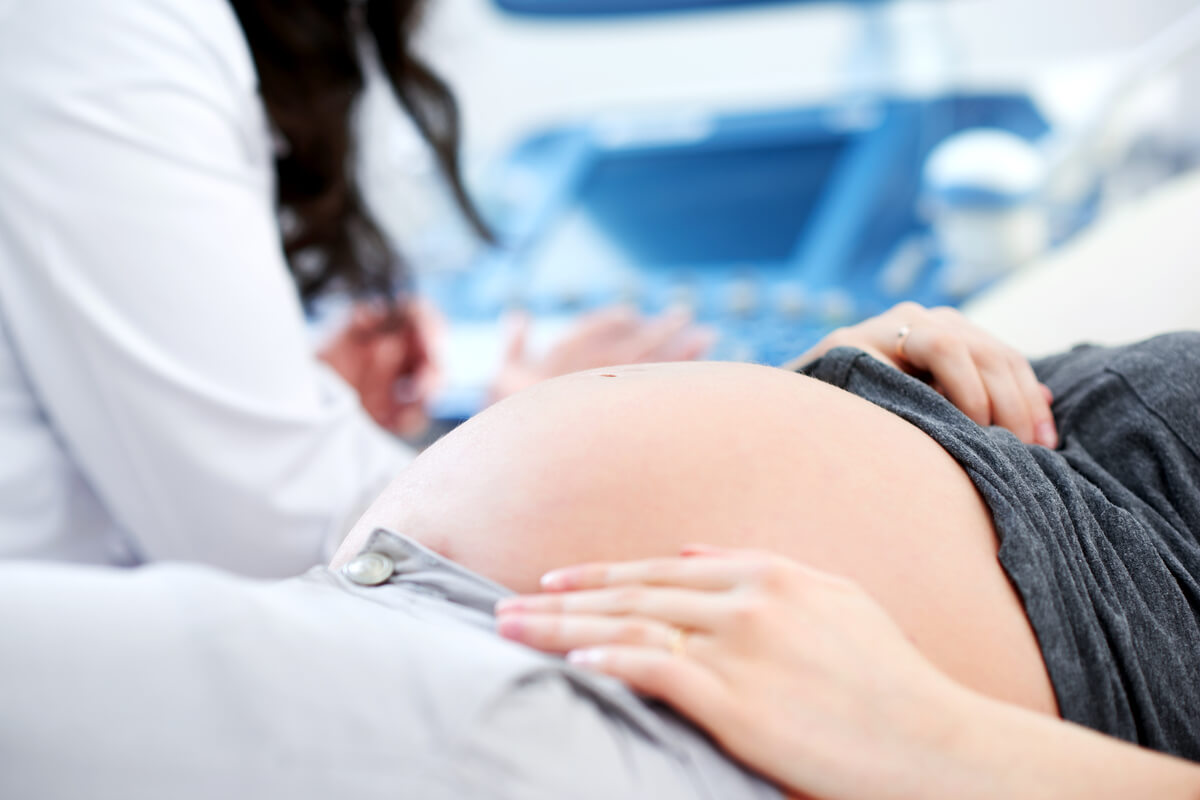
What Is Congenital Rubella Syndrome (CRS)?
Congenital Rubella Syndrome (CRS) occurs when a pregnant person infected with the rubella virus passes it to the fetus. The virus can cross the placenta and disrupt normal organ development, particularly during the first 12 weeks of pregnancy.
If you contract rubella at this stage, the virus can damage the baby’s eyes, heart, brain, and ears. After the fourth month, the risk of major defects decreases but does not disappear completely.
CRS is not contagious after birth, but its effects are permanent. There is no cure, and treatment focuses on managing symptoms and supporting development. Preventing infection through MMR vaccination before pregnancy is the most reliable protection.
Birth Defects and Long-Term Outcomes
Babies born with CRS may show several recognizable signs at birth. Common defects include:
| System: Eyes | |
|---|---|
| Common Findings | Cataracts, glaucoma, retinopathy |
| System: Heart | |
|---|---|
| Common Findings | Patent ductus arteriosus, pulmonary artery stenosis |
| System: Ears | |
|---|---|
| Common Findings | Sensorineural deafness |
| System: Growth & Development | |
|---|---|
| Common Findings | Low birth weight, developmental delay |
| System: Endocrine & Other | |
|---|---|
| Common Findings | Diabetes mellitus, thyroid disorders |
These conditions can appear alone or in combination. Some problems, such as hearing loss or diabetes, may not become evident until later in childhood.
You may need long-term medical care for your child, including cardiac monitoring, vision and hearing assessments, and developmental support. Early detection and coordinated care improve quality of life but do not reverse the damage caused by the infection.
Populations at Highest Risk
You face the greatest risk if you are not immune to rubella and become pregnant. People of childbearing age who have not received the MMR vaccine or lack documented immunity should confirm their vaccination status before conception.
Unvaccinated individuals exposed to rubella through travel or community outbreaks are also vulnerable. Infection in early pregnancy carries the highest chance of miscarriage, stillbirth, or CRS.
Health authorities recommend that women avoid pregnancy for at least four weeks after receiving the MMR vaccine. If you are already pregnant and unvaccinated, vaccination should wait until after delivery, but you should contact your healthcare provider immediately if exposed to rubella.
Prevention, Vaccination, and Public Health
You can prevent rubella through timely vaccination, community-wide immunity, and coordinated global health programs. Protecting yourself and others depends on maintaining high vaccine coverage and ensuring that people of childbearing age have immunity before pregnancy.
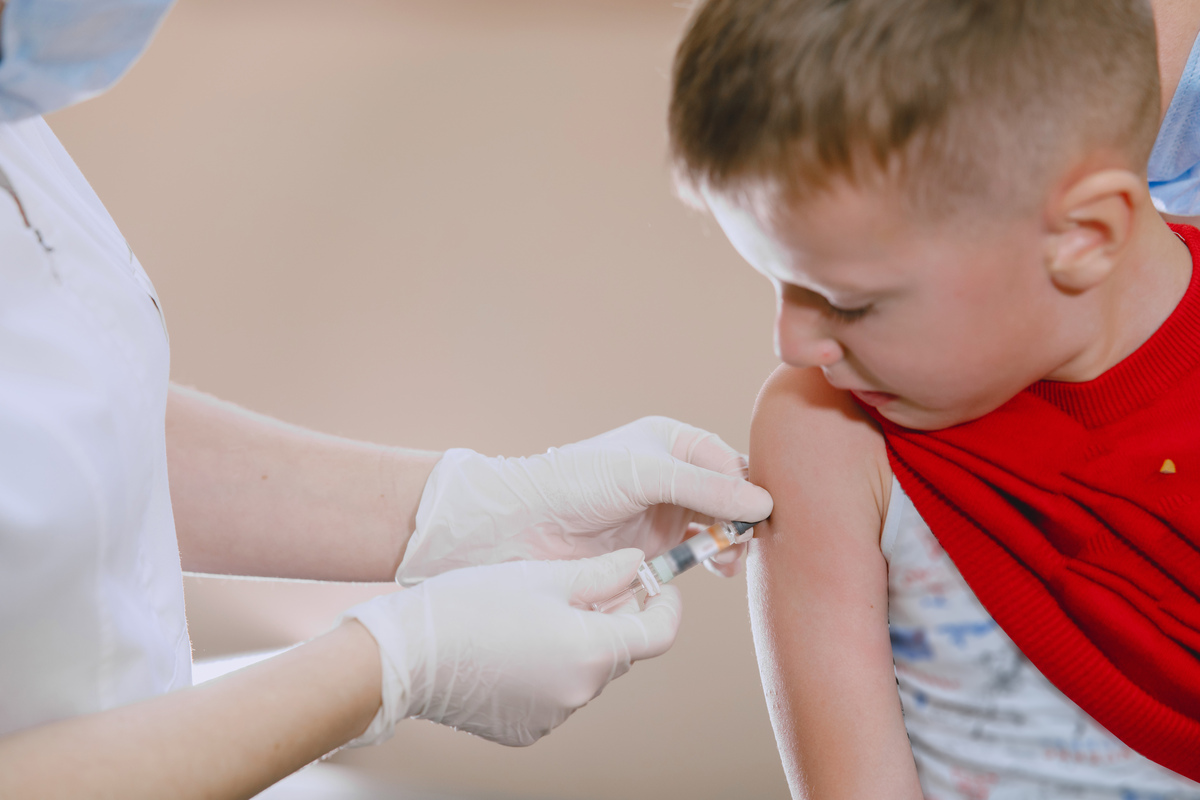
Rubella Vaccine and MMR Vaccine
The rubella vaccine is a live attenuated vaccine that protects against the rubella virus. It is most often given as part of the MMR vaccine, which also protects against measles and mumps.
A single dose provides long-lasting immunity for most people, while two doses ensure more than 95% protection. The vaccine helps your body create antibodies that recognize and fight the virus if exposed later.
Adverse reactions are usually mild. You might experience slight redness or swelling at the injection site, a low fever, or mild rash. These effects typically resolve without treatment.
The MMR vaccine can be given as part of routine childhood immunization or catch-up programs for those who missed earlier doses. Ensuring high vaccination coverage reduces outbreaks and protects individuals who cannot be vaccinated for medical reasons.
Immunity and Herd Immunity
When enough people in a community are immune to rubella, either through vaccination or past infection, herd immunity develops. This prevents the virus from spreading easily and protects those who are unvaccinated or have weakened immune systems.
For rubella, experts estimate that at least 85–90% of the population must be immune to stop sustained transmission. Maintaining this threshold prevents congenital rubella syndrome (CRS) and community outbreaks.
You can check your immunity through a blood test that looks for rubella antibodies. This is especially important if you plan to become pregnant, since rubella infection during early pregnancy can cause severe birth defects.
Vaccination Recommendations for Different Groups
Children: The first dose of the MMR vaccine is usually given at 12–15 months of age, with a second dose at 4–6 years. This schedule ensures strong and lasting immunity.
Adults: If you were not vaccinated as a child or are unsure of your status, you should receive at least one dose. Health workers, teachers, and travelers to areas with low vaccination rates should confirm their immunity.
Women of childbearing age: You should be vaccinated before becoming pregnant. The rubella vaccine is not recommended during pregnancy, so checking immunity beforehand helps prevent congenital infection.
Unvaccinated adults born before widespread vaccination: Some may have natural immunity from past infection, but testing is the safest way to confirm protection.
Global Eradication Efforts
The World Health Organization (WHO) and partners such as UNICEF and the Measles & Rubella Partnership lead global campaigns to eliminate rubella and congenital rubella syndrome. These programs aim to integrate rubella vaccination into existing measles immunization efforts.
As of 2024, about 175 countries include rubella vaccines in their national programs, with global coverage around 69%. Reported rubella cases have dropped by more than 90% since 2000.
Regions such as the Americas have already eliminated endemic rubella transmission. However, continued progress depends on maintaining high vaccination rates and reaching populations with limited healthcare access.
Global eradication requires sustained funding, routine immunization, and rapid outbreak response. Strengthening these systems helps protect future generations from preventable congenital disabilities linked to rubella infection.




